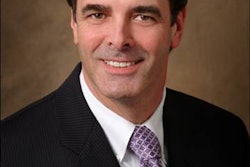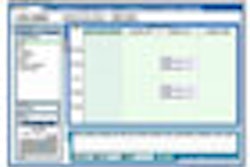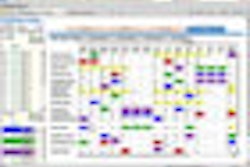Three years ago, Parkview Adventist Medical Center in Brunswick, ME, found itself in a dilemma.
Suppliers of the 55-bed facility's existing IT infrastructure were no longer actively supporting its products. "Vendors were being bought, and we were stuck with three or four major applications that we had been supporting for two years and did not have any maintenance at all," recalled Parkview chief information officer Bill McQuaid.
Parkview's administration also wanted to move forward by adding business applications, such as insurance verification, to its IT systems. "They were throwing fuel on the fire by adding these other systems when they weren't talking to each other," McQuaid said.
In addition, physicians and nurses had to repeatedly log on to gain access to patient data in different systems, making that process cumbersome and time-consuming.
McQuaid and his IT staff looked at the options. The facility could simply upgrade to newer versions of its existing technologies, but they concluded that it would be costly and would not put Parkview, technologically speaking, where it wanted to be in three years.
Parkview also considered combining with another larger hospital to tap into that facility's computerized physician order entry (CPOE), nursing documentation, and lab technologies. When Parkview saw the price tag of that venture and what it would pay for support to the other hospital, Parkview again sought an alternative.
IT choices
After a review of two IT vendors' technologies, Parkview chose Westwood, MA-based Meditech's client server with advanced clinical applications as the foundation for its IT system. One reason for the decision was that, at the time, Parkview was beginning to employ physicians and buy physician practices. Reliable access to patient data anywhere at anytime for those physicians would be paramount to make the strategy worthwhile.
Parkview began implementing Meditech's technology about two and a half years ago, using its own in-house IT staff for the project. Because of Parkview's size, outsourcing the effort would have strained the hospital's budget. In addition, by knowing the technology more intimately, IT staff also would be able to make future changes more quickly and easily.
"We implemented Meditech's entire suite of applications cheaper than what it would have cost to outsource three modules," McQuaid noted at the 2008 Healthcare Information and Management Systems Society (HIMSS) meeting in Orlando, FL. "In six months, we implemented 29 Meditech modules. We also brought a PACS interface and a transcription interface." In addition, Parkview performed a full, detailed conversion to a new billing system.
With the technology in place, one more issue was left to resolve. Nurses and physicians at Parkview still longed for an easier and more secure way to log in and off for files. They also wanted access to all files from one location.
Fingerprint biometrics
Parkview turned to identity and access management technology firm Imprivata of Lexington, MA, and its Imprivata OneSign single sign-on technology. The fingerprint biometric technology enables the identification of authorized hospital staff to access records and information with the swipe of a finger over the OneSign device, which is about the size of a computer mouse.
Single sign-on access to all clinical applications is available in Parkview's medical/surgery area, emergency room, obstetrics, and intensive care unit. Nurses have access to patient records through personal computers in different areas around the hospital.
Parkview's operating staff have been "begging for the product," too, McQuaid said. However, the technology is not feasible for them, because the OR staff usually wear gloves.
Overall, McQuaid said the biometrics technology has reduced IT costs, heightened user satisfaction, and increased security through enhanced authentication. Medication errors have been reduced, and physicians can log on to their computers to review records and sign transcriptions.
Parkview today
Today, approximately 130 biometric devices are installed throughout the hospital, and some 350 physicians and nurses use the biometric technology. "They love that they can access all patient data with just a swipe of a finger," McQuaid said.
The IT connection at Parkview does not stop with healthcare. The hospital's human resources department is connected to the Meditech IT system, which produces an automated script everyday to provide the IT staff with a list of employees who no longer work at the facility.
That feature "was huge for us," McQuaid said. With the nursing turnover, "every day we have an e-mail sent to our help desk e-mail account that has every nurse that has been terminated. We go into the active directory and disable them," he said.
By performing that one task, Parkview can disable former employees' remote access to files. "We cut them out of single sign-on, so they can't get onto the network," he added.
By Wayne Forrest
AuntMinnie.com staff writer
March 18, 2008
Related Reading
MGH/Brigham system moves briskly toward 100% EMR adoption, March 3, 2008
HIMSS survey: EMR tops healthcare IT plans, February 25, 2008
Insurer group promotes health record interoperability, May 19, 2006
Multivendor IT integration improves workflow, patient care, April 28, 2006
Integrating disparate systems key to EHR deployment, February 14, 2006
Copyright © 2008 AuntMinnie.com



















